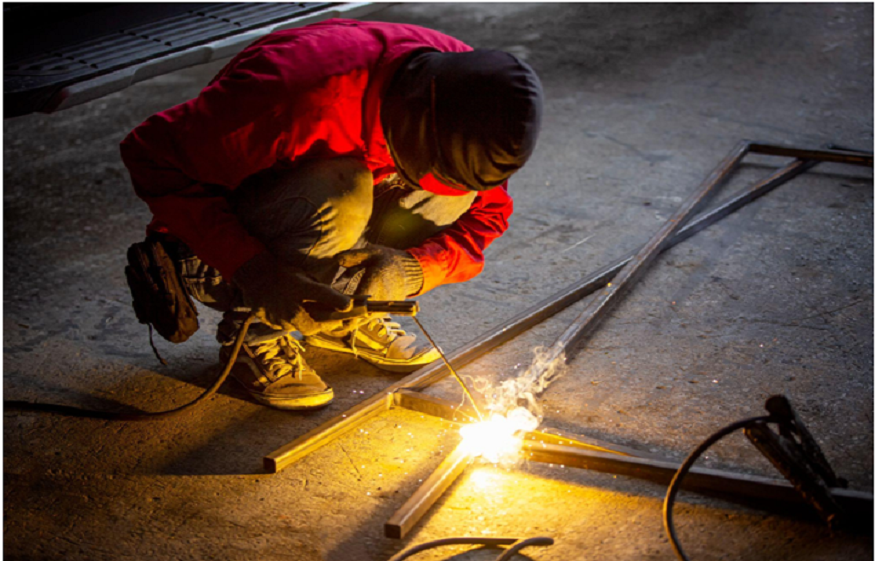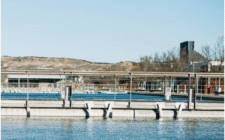Welding is the process of joining two pieces of metal together by melting and flowing a filler material into the joint. The most common welding process is arc welding, which uses an electric arc to create heat. Other welding processes include:
- Gas tungsten arc welding.
- Shielded metal arc welding.
- Gas metal arc welding.
- Flux-cored arc welding.
To weld safely, you need to know the proper safety procedures and equipment.
Safety: What you need to wear and precautions to take while welding
Welding is a process that uses intense heat to join metal together. It is a common method of fabricating metal products. Fabrication and welding can be done with various metals, including stainless steel, aluminum, and brass. To ensure the safety of the welder, certain precautions should be taken.
First and foremost, proper clothing should be worn. Welder’s helmets and gloves are essential pieces of gear. They protect the welder’s head and hands from sparks and intense heat. Clothing should also be flame-resistant. Shorts and tank tops are not recommended when welding.
In addition to proper clothing, safety glasses should always be worn when welding. They protect the eyes from sparks and flying debris. Earplugs or earmuffs should also be worn to protect the ears from the sound of the welding torch.
Types of Welding: The different types of welding and what each is used for
Welding is a process that joins two pieces of metal together using heat and filler material. There are many different types of welding, each with its advantages and disadvantages. Here are some of the most common types of welding:
MIG – Gas Metal Arc Welding (GMAW): MIG welding is a process that uses a continuous wire feed to join metals together. The process begins by creating a short circuit between the electrode and the work piece, which creates an arc. This arc melts the metals and causes them to fuse together.
MIG welding is often used by fabrication services in Canberra, NSW because it is a relatively easy process to learn and it produces high-quality welds. Additionally, MIG welders are versatile and can be used to weld a variety of metals, including aluminum and stainless steel.
TIG – Gas Tungsten Arc Welding (GTAW):Gas Tungsten Arc Welding (GTAW), also known as tungsten inert gas welding (TIG), is a manual welding process that uses a non-consumable tungsten electrode to produce the weld. The weld area is protected from oxidation by an inert shielding gas such as argon or helium.
GTAW is one of the most versatile welding processes available, and it can be used to weld a wide variety of materials including steel, stainless steel, aluminum, and titanium. GTAW requires a high degree of skill and experience to perform effectively, but it produces strong, high-quality welds.
There are several factors that affect the quality of a GTAW weld, including the type of shielding gas used, the amperage setting, and the angle at which the electrode is held.
STICK – Shielded Metal Arc Welding (SMAW): Shielded metal arc welding (SMAW), also known as manual metal arc welding (MMAW) or stick welding, is a manual welding process that uses a consumable electrode to create the weld. An electric current is then passed through the electrode and the metal being welded, causing it to heat up and form a weld.
SMAW is one of the oldest welding processes, and is still widely used today due to its simplicity and low cost. It can be used to weld a wide range of materials, including steels, aluminum, and cast iron. SMAW is particularly well suited for welding thicker materials.
who are proficient in SMAW are known as stick welders. Stick welders are in high demand in Griffith due to the variety of materials that can be welded with this process.
FLUX-CORED – Flux-Cored Arc Welding (FCAW): FCAW is a welding process that uses a flux-cored wire electrode. The flux-cored wire is a self-shielding electrode, which means the flux material surrounding the wire electrode protects the weld puddle from contamination. This makes FCAW an excellent choice for welding in all positions.
FCAW is also a very forgiving process, making it a good choice for inexperienced welders. The slag created during FCAW welding helps to conceal any defects in the weld puddle, making it less likely that these defects will be visible after welding.
Conclusion
In conclusion, welding is a necessary skill for many projects. It is important to be safe while welding by wearing the proper safety gear and taking precautions. There are many types of welding, each with its uses. Learn about the different types of welding so you can choose the right one for your project.




